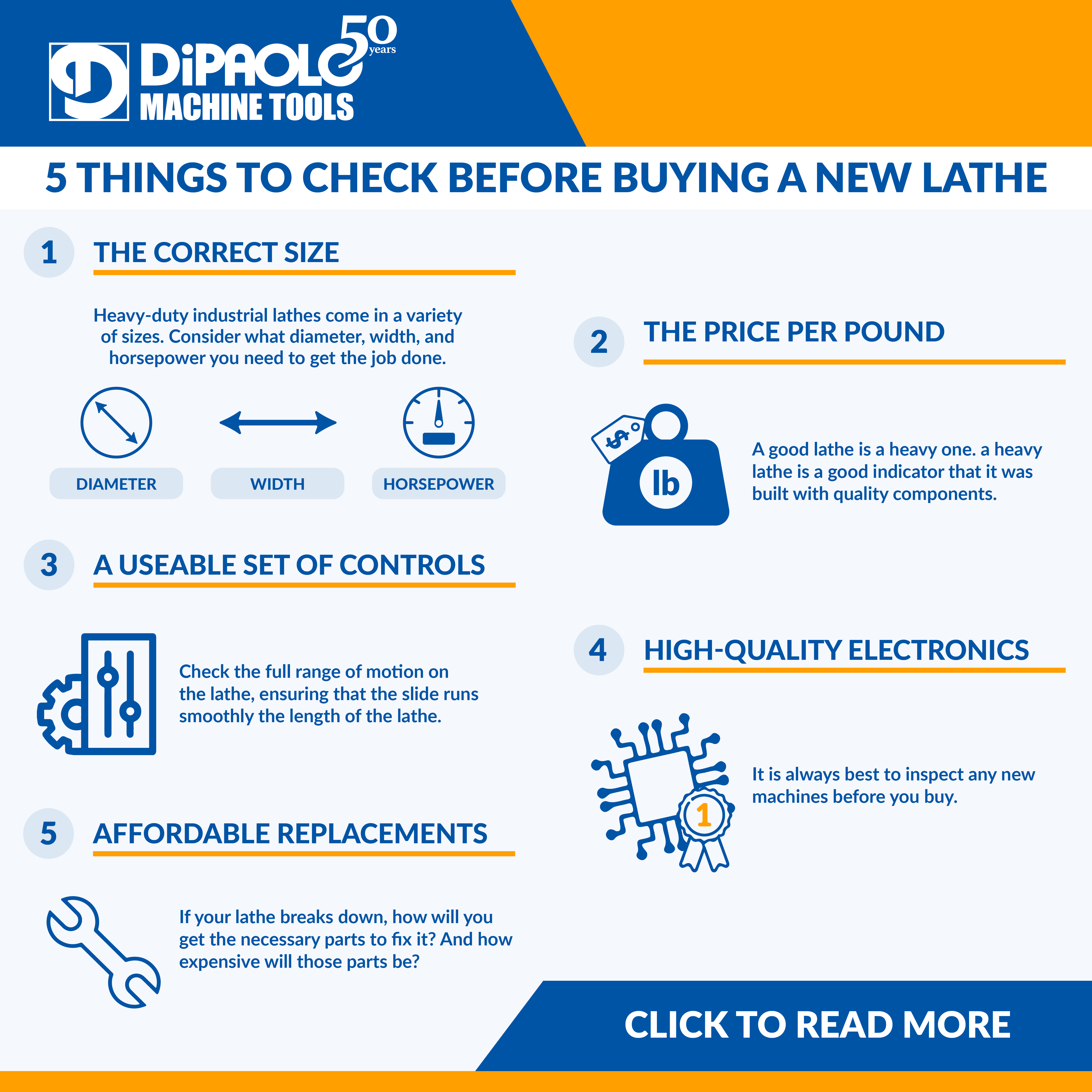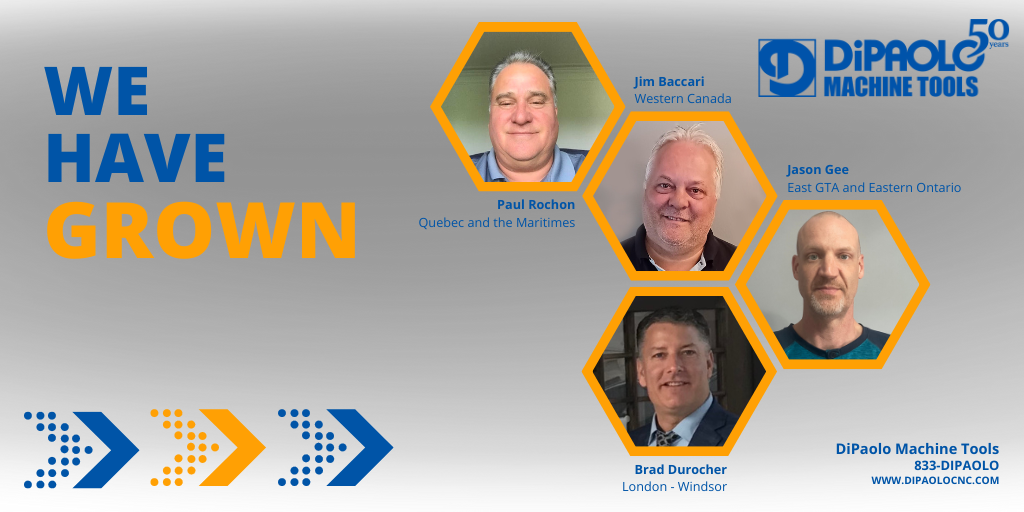PUBLISHED BY DiPaolo CNC
6 Things You Must Check For When Buying a New Lathe
You’ve decided to make an investment: purchasing an advanced metal lathe. The right lathe equips you to machine parts more intricately and more precisely than ever. But how do you find the right one?

At Summit, we want you to make the best decision on a new metal lathe, and that means knowing what to look for. Here are 6 of the most important things to check before buying a new metal lathe:
1. The correct size
- Heavy-duty industrial lathes come in a variety of sizes. To determine the right one for you, you need to consider three things:
- The diameter of the workpieces you intend to cut
- The length of the workpiece
- The amount of horsepower you’ll need
- Good metal lathes will be at least 2 HP. Lathe sizes vary, but are expressed as either a pair of numbers, e.g., “8 x 24” , or a single number, e.g. 12”.
- The first number, also known as the swing, refers to the max diameter of a workpiece that will rotate freely above the lathe bed, while the second number - known as the "center distance" - is the distance between the headstock and tailstock.
- Summit’s lathe range includes 14” to 100” swings and 40” up to 240" center distances.
2. The price per pound
- A good lathe is a heavy one. That may seem counterintuitive, but a heavy lathe is a good indicator that it was built with quality components. Summit’s all cast-iron construction means that our engine lathes can easily weigh over 8,000 pounds.
- The heavier a lathe is, the more stable and rigid it is likely to be, both factors that contribute to precise cuts. Heavy lathes are also more durable and capable of handling constant use.
3. A useable set of controls
- For manual lathes, be sure that all control systems are simple and well laid-out.
- Check the full range of motion on the lathe, ensuring that the slide runs smoothly the length of the lathe.
- For CNC lathes, be aware that not all CNC programming languages are created equal. Some machines use conversational programming or different variations on G-code.
- Before you buy a CNC machine, know what language it uses - and find one that suits you. Conversational programming can limit the CNC operations you can do, but it’s easy to learn and more intuitive than “pure” G-code. That makes it a good option for someone whose CNC programming skills aren’t advanced.
4. High-quality electronics
- It is always best to inspect any new machines before you buy. Make sure they turn on, run smoothly, and are made of high-quality components.
- One quick way to inspect that is to take a look at the electrical cabinet. Is everything wired cleanly and correctly? Take a close look at the filtering and sealing around the cabinet. Problems with electronics are a common cause of CNC machine tool downtime, and it’s worth investing in a machine with quality electronics.
5. Affordable replacements
- Think ahead - if your lathe breaks down, how will you get the necessary parts to fix it? And how expensive will those parts be?
- Consider where any replacements will come from. Summit keeps a million-dollar inventory of ready-to- ship parts on hand, ensuring that all replacement parts for Summit lathes ship from in-country.
- Maintenance is crucial to keep your new lathe running smoothly - Summit includes a complete parts breakdown and maintenance schedule in their user manuals.
6. Quality service
- Last but not least, purchase your new lathe from a company with an excellent service record. You don’t want to be tied up with poor customer service while your new lathe lies idle and parts go unmade.
- Purchase from a company with your best interests in mind. Summit’s service department knows their way around a machine shop and can answer any questions you might have. Reach out and ask us!

.png)